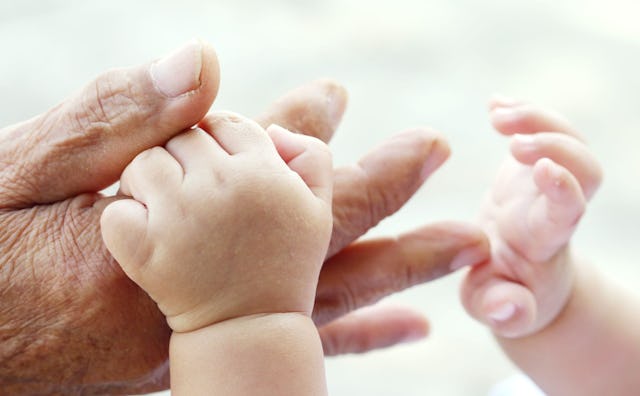How I Helped My Children Understand And Cope With Death

Before my husband’s mother passed on at age 72, she gathered her family and friends in her living room as she huddled in her pink vest, her body chilled. “This is such a gift to say goodbye to all of you,” she said, as her eyes went from face to face. A gift? I thought. You are dying.
Months later, as my grief subsided, I understood. At her funeral, her life had come together like a series of photographs—childhood friends, high school friends, college friends and her fellow retirees she’d met while wintering in Tucson, Arizona. She understood that each of our stories have a beginning, a middle and an end, and she’d taken care to invest in her narrative arc. Death wasn’t something to be feared; it was simply the ending to her life here on earth.
I suspect her faith will always be much stronger than mine. But her words while dying brought on such an appreciation for her life and wisdom that I no longer fear death as I had. Dying was a natural process; her body shut down in predictable ways. And as the last of her mind folded up, the most beautiful part of her life—her legacy of six grown children—surrounded her.
By gathering in her living room, we may have given her a gift of last goodbyes, but she gave us a gift too. Because she didn’t fear her death, I didn’t fear her death. Now death doesn’t feel like a great unknown. And that’s a gift I want to pass on to our children.
About a month ago, our family faced a tough choice: Our dog, after routine surgery, developed a stricture in her esophagus so severe she couldn’t eat or drink. She threw up in our yard. She gagged while eating grass to try to settle her stomach. For thousands of dollars, we could sedate her to perform an endoscopy followed by one or more balloon dilations with no guarantees, said the surgeon, or, given that our dog was past her life expectancy, we could put her to sleep.
Before my husband’s mother died, I would have fought for our pet’s life. But through her eyes, I understand there is a time to let go. As my father-in-law, a veterinarian, explained it, “Often, clients ask me to do whatever I can to save their pet’s life. Then, they come back six months later, enraged at their pet because it can no longer control its bladder. Let go while the memories are good.” It wasn’t fair to prolong her life, and the pain and stress that would come with it, because we weren’t ready to let go.
Our eldest chose to join us while we put our dog to sleep. He held her head and spoke to her til she passed on. While in pain, he was also able to find peace. Here’s how we prepared our children for her death.
Acknowledge Their Fears
My husband and I listened to their concerns to learn their beliefs and the thoughts they struggled with. That made it easier for us to address their fears—each child, at a different developmental stage, had different ones—rather than expose them to ours.
Teach Your Children That Life Is a Cycle
When my mother-in-law died, we talked about her life. Her death was one moment; it didn’t define the joy she brought us, but was simply a transition that brought her full circle, like the butterflies they had learned about in school.
Death Does Not Have to Bring On Pain
We included our children in our discussion about whether or not to put our dog to sleep. We talked about how her arthritic body created pain, how freeing her from this body would remove her pain.
Talk About Passing
They needed outlets for their grief. Our kids baked clay paw prints of our dog to preserve their memories of her.
Practice Gratitude
Grief ebbs and flows. We share memories of both our mother-in-law and our dog at the dinner table to make sure the conversation continues to flow. We remember what we’re thankful for: the joy they brought into our life.
This article was originally published on